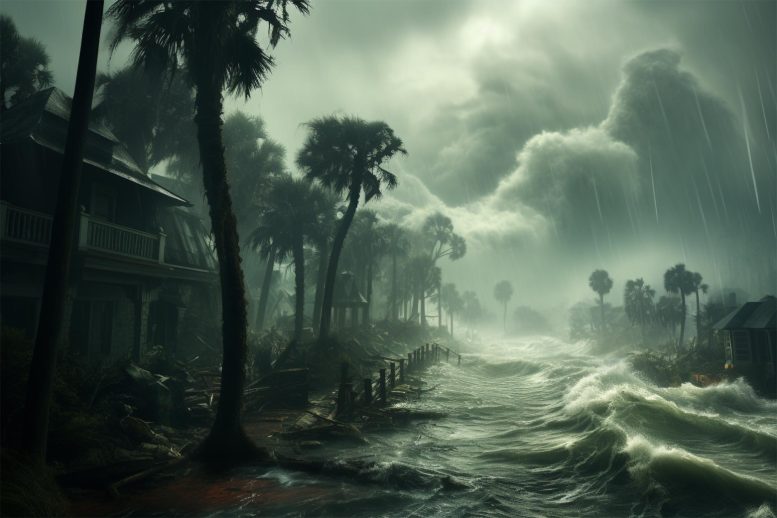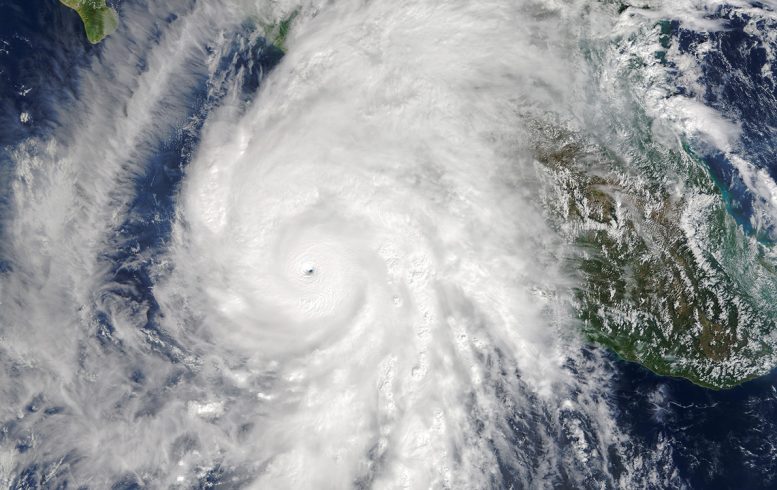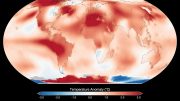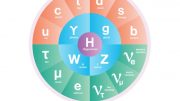
Climate scientists suggest the introduction of a Category 6 to the Saffir-Simpson Wind Scale due to a trend towards more intense hurricanes in a warming climate. Their research highlights the need for better risk communication regarding the increased potential for devastating hurricanes, with findings pointing to a significant rise in the likelihood of such extreme storms in the future. Credit: SciTechDaily.com
For over half a century, the National Hurricane Center has employed the Saffir-Simpson Windscale to convey the potential for property damage; this system classifies hurricanes on a scale ranging from Category 1 (wind speeds of 74 – 95 mph) to Category 5 (wind speeds exceeding 158 mph).
But as increasing ocean temperatures contribute to ever more intense and destructive hurricanes, climate scientists Michael Wehner of Lawrence Berkeley National Laboratory (Berkeley Lab) and James Kossin of the First Street Foundation wondered whether the open-ended Category 5 is sufficient to communicate the risk of hurricane damage in a warming climate. So they investigated and detailed their extensive research in a new article published in the Proceedings of the National Academy of Sciences (PNAS), where they also introduce a hypothetical Category 6 to the Saffir-Simpson Wind Scale, which would encompass storms with wind speeds greater than 192 mph.
The Motivation Behind Reevaluating the Saffir-Simpson Scale
“Our motivation is to reconsider how the open-endedness of the Saffir-Simpson Scale can lead to underestimation of risk, and, in particular, how this underestimation becomes increasingly problematic in a warming world,” said Wehner, who has spent his career studying the behavior of extreme weather events in a changing climate and to what extent human influence has contributed to individual events.
According to Wehner, anthropogenic global warming has significantly increased surface ocean and tropospheric air temperatures in regions where hurricanes, tropical cyclones, and typhoons form and propagate, providing additional heat energy for storm intensification. When the team performed a historical data analysis of hurricanes from 1980 to 2021, they found five storms that would have been classified as Category 6, and all of them occurred in the last nine years of record. They determined a hypothetical upper bound for Category 5 hurricanes by looking at the expanding range of wind speeds between the lower-category storms.
Understanding Hurricanes and Projected Climate Impact
Hurricanes, tropical storms, and typhoons are essentially the same weather phenomenon; their name difference is purely geographical: storms in the North Atlantic and Northeast Pacific Oceans are called hurricanes, events in the Northwest Pacific Ocean are called typhoons, and occurrences in the South Pacific and Indian Oceans are called tropical cyclones.
In addition to studying the past, the researchers analyzed simulations to explore how warming climates would impact hurricane intensification. Their models showed that with two degrees Celsius of global warming above pre-industrial levels, the risk of Category 6 storms increases by up to 50% near the Philippines and doubles in the Gulf of Mexico and that the highest risk of these storms is in Southeast Asia, the Philippines, and the Gulf of Mexico.
“Even under the relatively low global warming targets of the Paris Agreement, which seeks to limit global warming to just 1.5°C above preindustrial temperatures by the end of this century, the increased chances of Category 6 storms are substantial in these simulations,” said Wehner.
“Tropical cyclone risk messaging is a very active topic, and changes in messaging are necessary to better inform the public about inland flooding and storm surge, phenomena that a wind-based scale is only tangentially relevant to. While adding a 6th category to the Saffir–Simpson Hurricane Wind Scale would not solve that issue, it could raise awareness about the perils of the increased risk of major hurricanes due to global warming,” said Kossin. “Our results are not meant to propose changes to this scale, but rather to raise awareness that the wind-hazard risk from storms presently designated as Category 5 has increased and will continue to increase under climate change.”
Reference: “The growing inadequacy of an open-ended Saffir–Simpson hurricane wind scale in a warming world” by Michael F. Wehner and James P. Kossin, 5 February 2024, Proceedings of the National Academy of Sciences.
DOI: 10.1073/pnas.2308901121










“…, where they also introduce a hypothetical Category 6 to the Saffir-Simpson Wind Scale, which would encompass storms with wind speeds greater than 192 mph.”
That would encompass the 1934 record atop Mount Washington (NH) at 231 MPH. Maybe, just to be safe, they should also propose a category 7 while they are at it.
If they decrease the required windspeeds of each category level, they could get it up to Category 11, due to climate change.
Some infrared frequencies can pass through the atmosphere and some cannot. The
ones that cannot get trapped and cause the earth to get hotter. Could we build
something that would convert the frequency that cannot penetrate the atmosphere to
the frequency that can so the energy can escape to space? It might be something as simple as a sheet of metal painted with a special paint. Maybe someone can do the math.